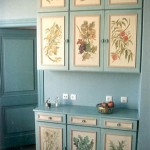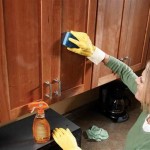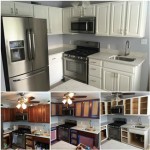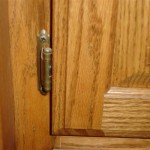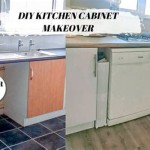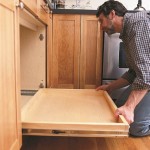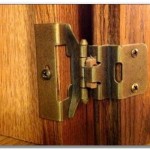Kitchen Cabinets Ready To Assemble
Ready-to-assemble (RTA) kitchen cabinets offer a compelling blend of affordability and customization for homeowners seeking to upgrade their kitchens without the hefty price tag of custom cabinetry. These cabinets arrive unassembled, requiring homeowners to put them together, but this DIY approach translates to significant cost savings. Understanding the various aspects of RTA cabinets, from materials and construction to assembly and installation, can empower homeowners to make informed decisions.
RTA cabinets are typically constructed using a variety of materials, each impacting the cabinet's durability, aesthetics, and cost. One common material is particleboard, engineered from wood chips and resin. While particleboard is a budget-friendly option, it can be susceptible to moisture damage if not properly sealed. Medium-density fiberboard (MDF) is another popular choice, offering greater density and moisture resistance than particleboard, making it a more durable, though slightly more expensive, alternative.
Plywood, constructed from thin layers of wood veneer, is considered a premium material for RTA cabinets. Its strength, stability, and resistance to warping make it a long-lasting choice. Solid wood, while often used for cabinet doors, is less common for the cabinet boxes themselves due to cost and potential expansion and contraction with humidity changes. The choice of material influences the cabinet's overall performance and longevity.
Beyond the core material, the construction methods employed in RTA cabinets significantly impact their quality. Look for features like dovetail joinery for drawers, which interlocks wood pieces for a strong, durable connection. I-beam construction on drawer bottoms provides added support and prevents sagging. The thickness of the cabinet box material also matters; thicker materials contribute to greater stability and resistance to damage.
The finish of RTA kitchen cabinets plays a vital role in both aesthetics and protection. Common finishes include laminate, thermofoil, and paint. Laminate is a durable, cost-effective option that resists scratches and stains. Thermofoil involves applying a thin vinyl film to the cabinet surface, creating a smooth, consistent finish. Painted cabinets offer a wide range of color options and can be easily touched up if needed. Consider the kitchen's overall design and the desired level of maintenance when selecting a cabinet finish.
The assembly process for RTA cabinets varies depending on the manufacturer and the specific cabinet design. Most cabinets come with pre-drilled holes and detailed instructions, simplifying the assembly process. Common tools required include a screwdriver, hammer, and potentially a drill. Some manufacturers offer online video tutorials to guide homeowners through the assembly steps. While the assembly process requires time and effort, it is generally manageable for those with basic DIY skills.
Installation of RTA kitchen cabinets can be undertaken by homeowners with some experience in home improvement projects. Accurate measurements of the kitchen space are crucial for a successful installation. Leveling the cabinets is essential for ensuring a proper fit and functionality. Connecting the cabinets together and securing them to the wall requires careful attention to detail. While professional installation is always an option, the DIY approach offers further cost savings.
Selecting the right RTA cabinets involves considering the kitchen’s layout, desired style, and budget. Measure the available space carefully to determine the appropriate cabinet sizes. Explore different door styles, finishes, and hardware options to achieve the desired aesthetic. Compare prices and read reviews from other customers to assess the quality and value of different RTA cabinet brands. Careful planning and research can lead to a successful kitchen upgrade.
Maintaining RTA cabinets involves regular cleaning and care to preserve their appearance and functionality. Wipe down cabinet surfaces with a damp cloth and mild detergent. Avoid harsh chemicals or abrasive cleaners that can damage the finish. Address any spills or stains promptly to prevent permanent discoloration. Proper maintenance can extend the lifespan of RTA cabinets and keep them looking their best.
The advantages of RTA kitchen cabinets are numerous, particularly for budget-conscious homeowners. The significant cost savings compared to custom or pre-assembled cabinets allow for greater flexibility in allocating the renovation budget. The variety of styles, finishes, and materials available offers ample opportunity for customization. The DIY aspect empowers homeowners to take control of the project and potentially acquire new skills. RTA cabinets provide a viable pathway to achieving a beautiful and functional kitchen without breaking the bank.
When considering RTA kitchen cabinets, research different manufacturers and compare their offerings. Look for manufacturers with a reputation for quality materials and construction. Read customer reviews to gauge satisfaction levels with the product and customer service. Examine warranty information to understand the coverage provided in case of defects or damage. Thorough research and comparison shopping can help homeowners select the best RTA cabinets for their needs and budget.

Ready To Assemble Kitchen Cabinets In Stock The Home Depot

Brilliant White Shaker Ready To Assemble Kitchen Cabinets The Rta

Frequently Asked Questions About Rta Cabinets

Why Choose Rta Kitchen Cabinets Stock Cabinet Express

What To Know Before Ready Assemble Kitchen Cabinets Rta 365
10 Tips For Ready To Assemble Kitchen Cabinets Choice Cabinet

Rta Kitchen Cabinets Ready To Assemble

Elegant Stone Shaker Assembled Kitchen Cabinets Rta Wood

6 Benefits Of Ready To Assemble Cabinets Betterdecorating

Rta Cabinet Supply Best Ready To Assemble Kitchen Cabinets
Related Posts


